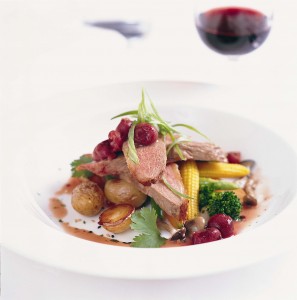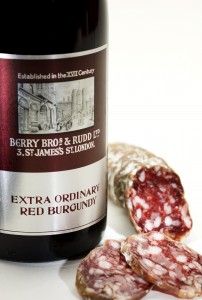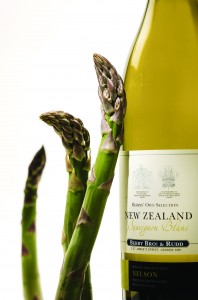Food & Wine Matching on a Budget
Author: Guest Blogger
 After the indulgences of Christmas, most of us will be feeling the pinch a bit, but there’s no need to give up one of life’s pleasures to get the bank balance back into the black. We’ve come up with a few handy tips and ideas to help you choose wines that offer great value and that also match simple, everyday meals like sausages and Shepherd’s Pie.
After the indulgences of Christmas, most of us will be feeling the pinch a bit, but there’s no need to give up one of life’s pleasures to get the bank balance back into the black. We’ve come up with a few handy tips and ideas to help you choose wines that offer great value and that also match simple, everyday meals like sausages and Shepherd’s Pie.
Our first tip is to look at wines from warm climates and from regions where agricultural land is cheap; it’s much easier to grow healthy grapes when the conditions are favourable, which means far less effort goes into making the wine, so there’s less cost for the producer. New World countries like Chile and Australia are good places to look, as are warmer Mediterranean regions such as Spain.
Next choose grape varieties that are most suitable for high-yield cultivation (as the number of bunches per vine increases, the weaker the grapes’ flavour becomes), as the more wine a producer can make per vine, the cheaper it will be. For example, Chardonnay for the whites, and the red grapes, Merlot or Grenache
Now that you know how to spot a wine bargain, next consider which will work best with your supper!

Casseroles (meat) – cheap cuts of meat make gorgeous warming meals. Full of flavour, they need to be matched with lower-tannin, fruity wines to match their intensity. Grenache-based wines from Spain or the Rhône work perfectly.
Chicken – simply roasted with a dollop of butter, chicken offers an inexpensive treat; try it with a ripe Semillon or Chardonnay from Australia or the South of France.
Curries – balance the heat and big flavours with aromatic, spicy or fruity wines. Whites like Viognier or Pinot Gris (Pinot Grigio) for poultry and fish curries, Merlot and Tempranillo for meat curries.
Fish & Chips – when you can’t be bothered cooking, this traditional British treat can be turned into a feast accompanied by a zingy white to cut through the grease. Try a Chilean Sauvignon Blanc, or a Picpoul de Pinet from southern France.
Omelette – an omelette and a glass of wine, first suggested by that doyenne of the kitchen, Elizabeth David, is a quick and tasty snack. Choose a white that’s crisp yet smooth: a blend of indigenous grapes from the south of France (perhaps a Côtes de Gascogne or Vin de Pays d’Oc) or a Spanish Verdejo would fit the bill.
Pasta – your wine choice needs to match the sauce. For creamy sauces choose a rich round Chardonnay; while pesto demands a herby, crisp Sémillon/Sauvignon blend. For meaty pasta, like Bolognese and Lasagne, choose a medium-full red made with the Sangiovese grape. 
Offal – not very fashionable these days, but we’re missing out on cheap, delicious and nutritious fare. Match it with smooth reds: a southern Rhône blend or perhaps a Spanish Mourvèdre.
Sausages – you can’t beat bangers and mash, or toad in the hole, especially when complemented by an uncomplicated Syrah from southern France or Australia, where the grape is called Shiraz.
Salmon – once considered a fish for kings, today’s farmed salmon means it’s cheap enough to enjoy any day of the week. Choose a rich white or light red: Chardonnay or a Bourgogne Rouge.
Shepherd’s Pie – pair this favourite comfort food with peppery reds made with the Syrah (Shiraz) grape.



Very useful suggestions. Now how about a column doing the opposite, giving suggestions for what to eat with high ticket wines—chardonnays, merlots, sauvignon blanc that need a suitably important meal to match them.